|
Le Moulin de Gô
Ruth Andrews
Pictures by Mick Watson
|
|
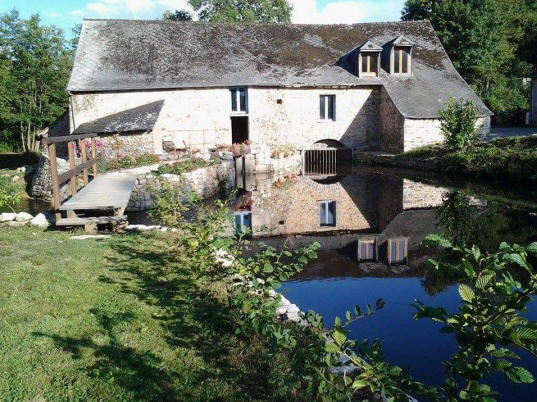 |
Just
before Christmas, ex-pat Mick Watson emailed HMG to
ask if we would be interested to hear about the
restoration of his derelict old watermill. Of
course, we said yes.
The
mill is at St Pierre-sur-Erve in Mayenne near Laval,
and is not to be confused with Le Moulin du Got, at
St Léonard de Noblat in Haute-Vienne near Limoges,
which HMG visited in 1998. This article is the
result, based on the information he has sent.
Mick
is a ‘builder by trade’ and he bought the mill some
25 years ago, along with several other properties,
but was unsure how to tackle the restoration.
|
|
However, in 2012 he was approached by a local
villager Jean-Claude Portiers who said his family
and friends wanted to volunteer to help renovate the
mill as a local heritage project. They said that
the stretch of river here is 70km long and at one
time it had 70 mills on it but now there are only
five left and this is the only one that isn’t
renovated. Mick said: “I just couldn’t see why they
would want to do it for nothing. People don’t
really normally work like that. That was the Friday
and they started work the following Tuesday. They
just turned up and started clearing overgrown plants
away. I’ve never seen anything like it. They
worked as if they were being paid.” (He’s
obviously never met the Heavy Gang!)
|
|
The mill is just outside St
Pierre-sur-Erve and was probably rebuilt between
1844 and 1847 on a site which dates back to at least
1772 and probably to the 14th century. Since this
rebuild it does not seem to have undergone any
important modifications, but it had not been used
since the late 1960s, and was in considerable
disrepair.
Aerial view by Eric Medard
|
.jpg) |
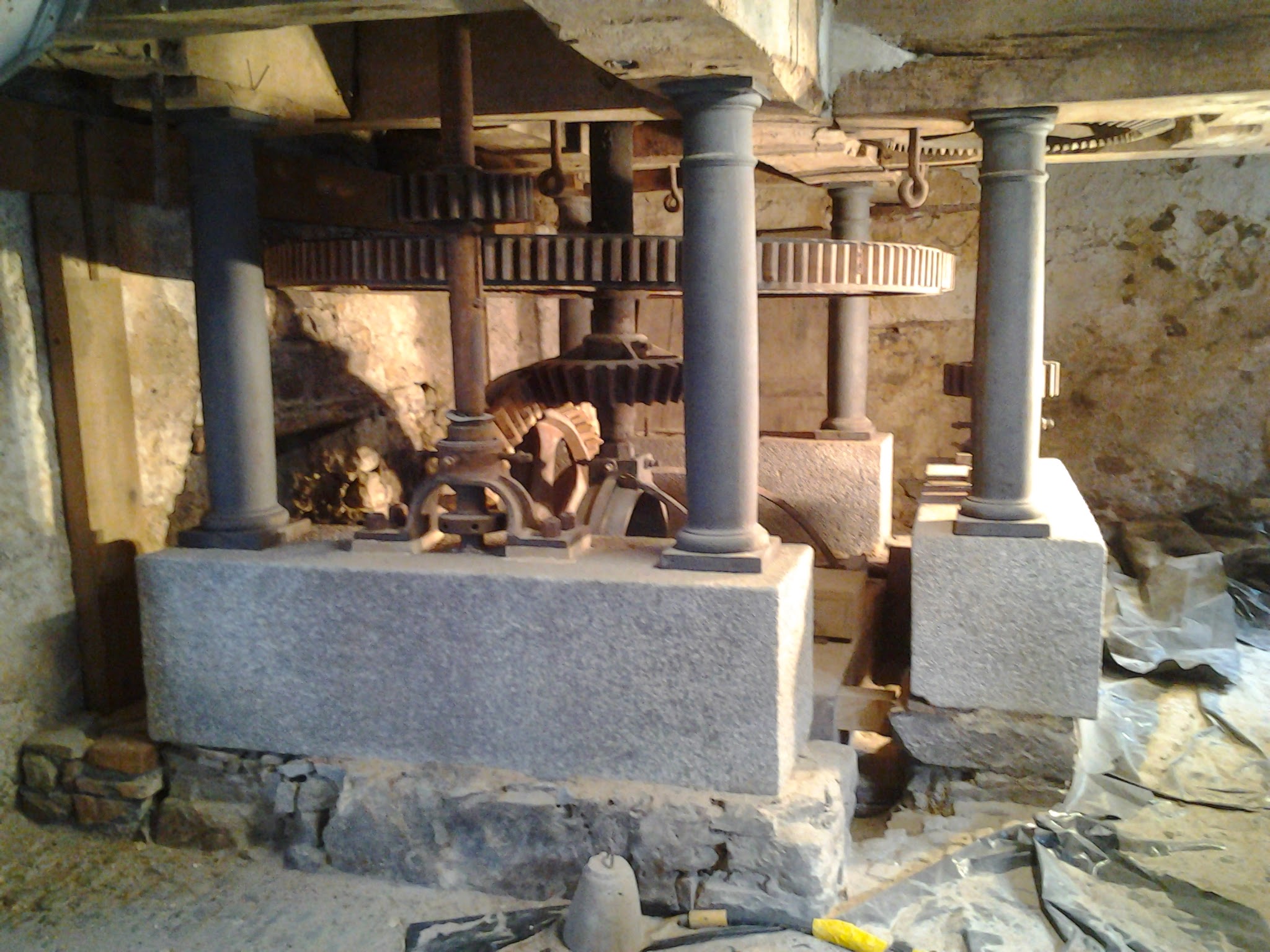 |
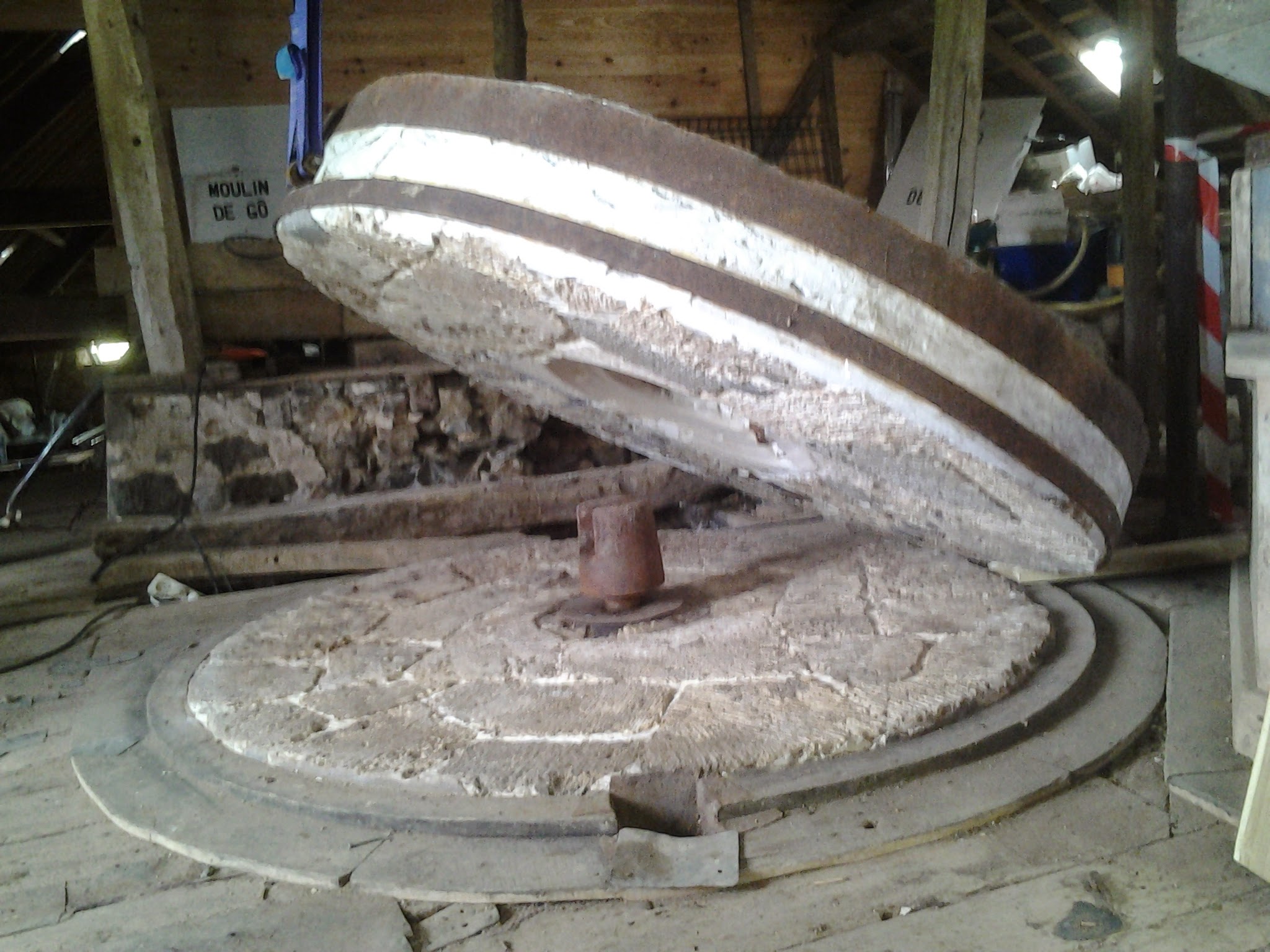 |
|
A
description of the mill on its website (as
translated by Google!) states:
“The
mill takes place on a derivation of the Erve. On
the ground floor, the poquerie contains the mill's
transmission mechanism, with the pit wheel, the
idler gear, and a large gear wheel that drove the
axes of the three wheels. Above, the floor's floor
joist is supported by cast iron columns resting on a
stone chest, delimiting a quadrangular space. A
wooden staircase provides access to the attic which
still houses two pairs of millstones out of three,
protected by wooden chests,
archings.”
|
|
Restoration work began in 2012 and as nothing had
been done for over 20 years chain saws were needed
to even approach the building, and the tree roots
growing out of the walls had done a lot of damage.
As Mick says .”I needed to rebuild a lot of walls”.
Within a month the sluice gates leading from the
main river were open and the mill had water flowing
through it once again.
At
about this time the non-profit making association
Les Amis du Moulin de Gô was formed to restore,
maintain, and administer the mill.
Compare this picture with the restored building
at the start of the article.
|
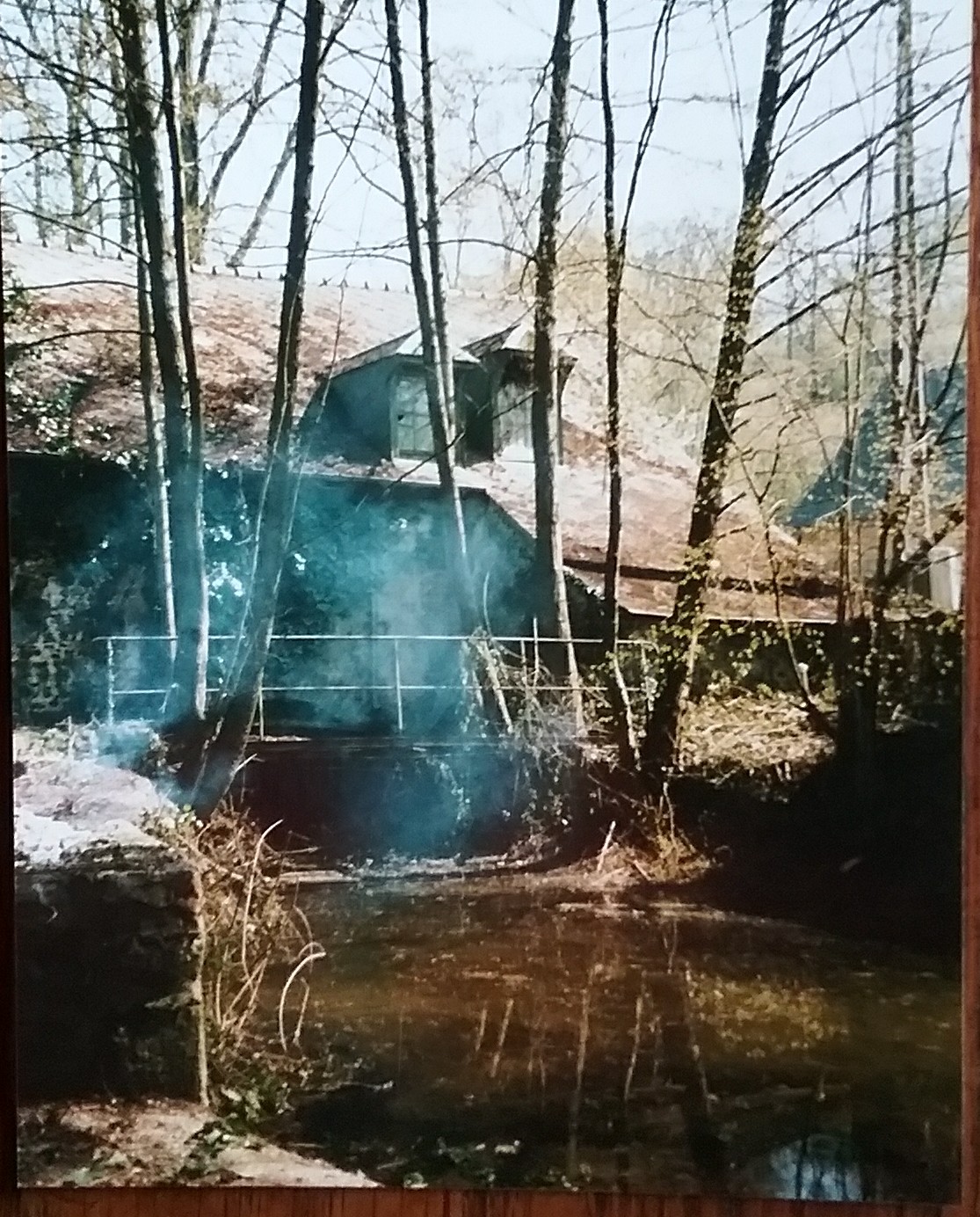 |
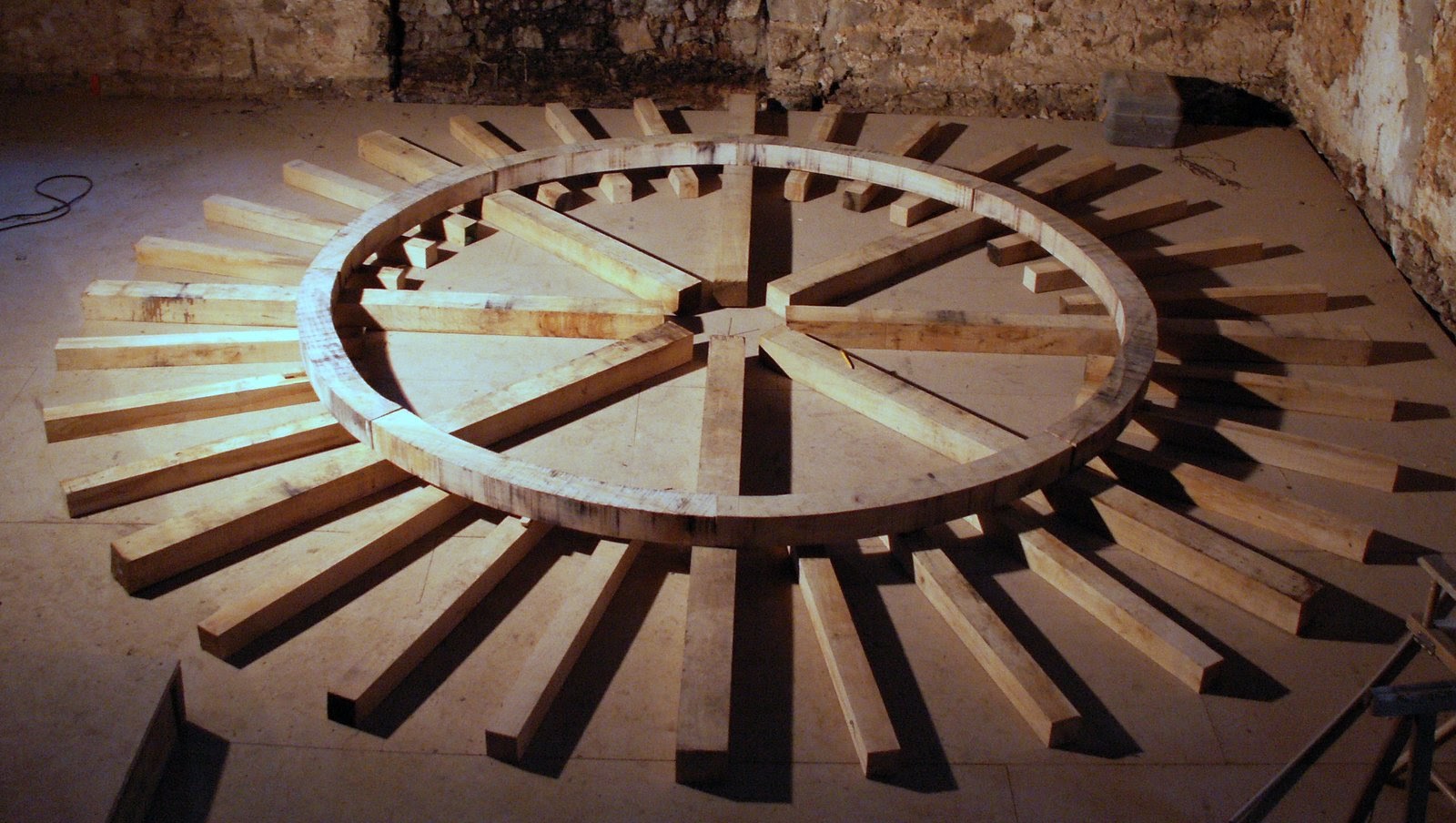
Late in 2013 a completely new waterwheel was
constructed using green oak; this was finished by
2014.
|
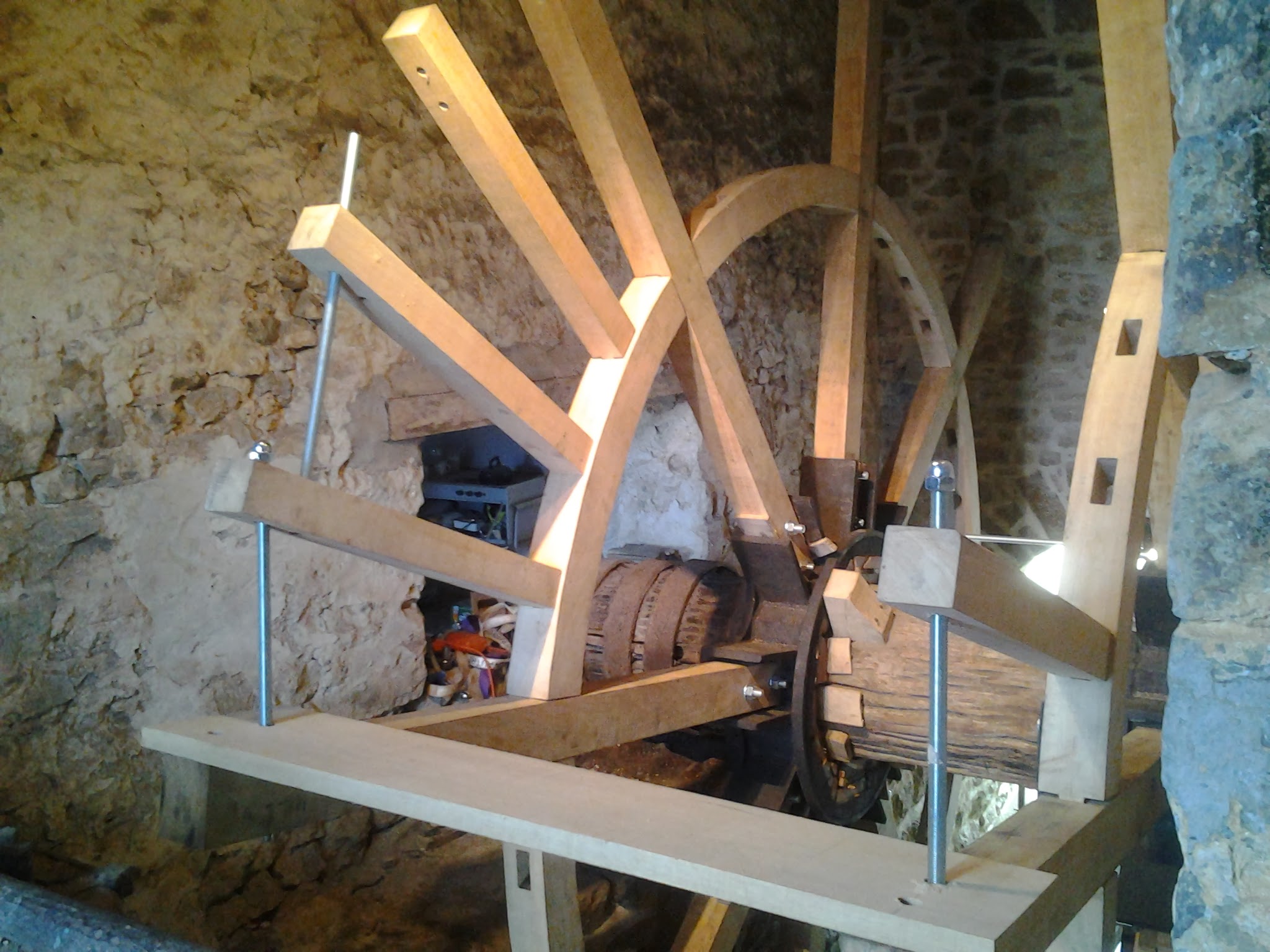 |
|
After the wheel, the volunteers tackled the
millstream, which needed dredging. It was over 400m
long and in places the silt and vegetation had built
up to over a metre deep. “After lowering the
barrage on the river and letting out the water,
Jean-Claude got in with the digger.” Whilst
clearing the millstream two World war 2 pistols and
ammunition were found: locals think that these were
hidden under an old bridge by the Resistance.
|
|
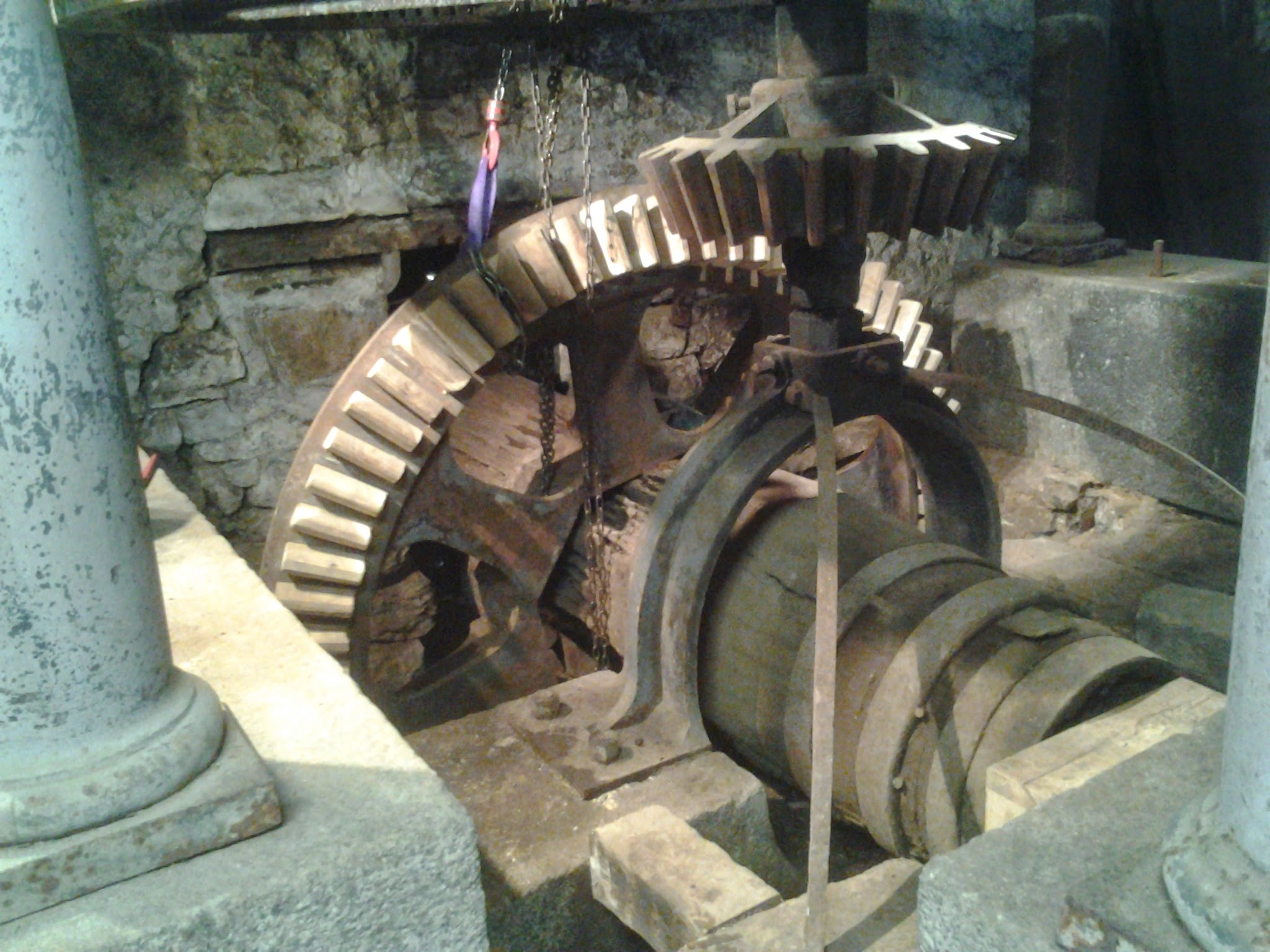
|
The next job was to sort out the drive mechanism.
The rotten teeth on the metal pit wheel and crown
wheel were replaced using acacia on the main drive
wheel and cormier (Sorbus domestica, service tree)
on the smaller gears. Cormier is
very difficult to find, but luckily a furniture
maker
in Mick’s local village had some, and made 250 teeth
which were fitted by Jean-Claude.
The first flour was produced in 2015. A local baker
used the flour to make a loaf of bread. However, it
may be a while before the mill can produce flour for
the public. “We’ll have to find out the legislation
with regard to producing flour for sale before we
can start grinding regularly,” Mick says. “We need
to ensure it’s fit for public consumption. In the
meantime, we grind flour on open days and people can
have a look at how it all works.”
|
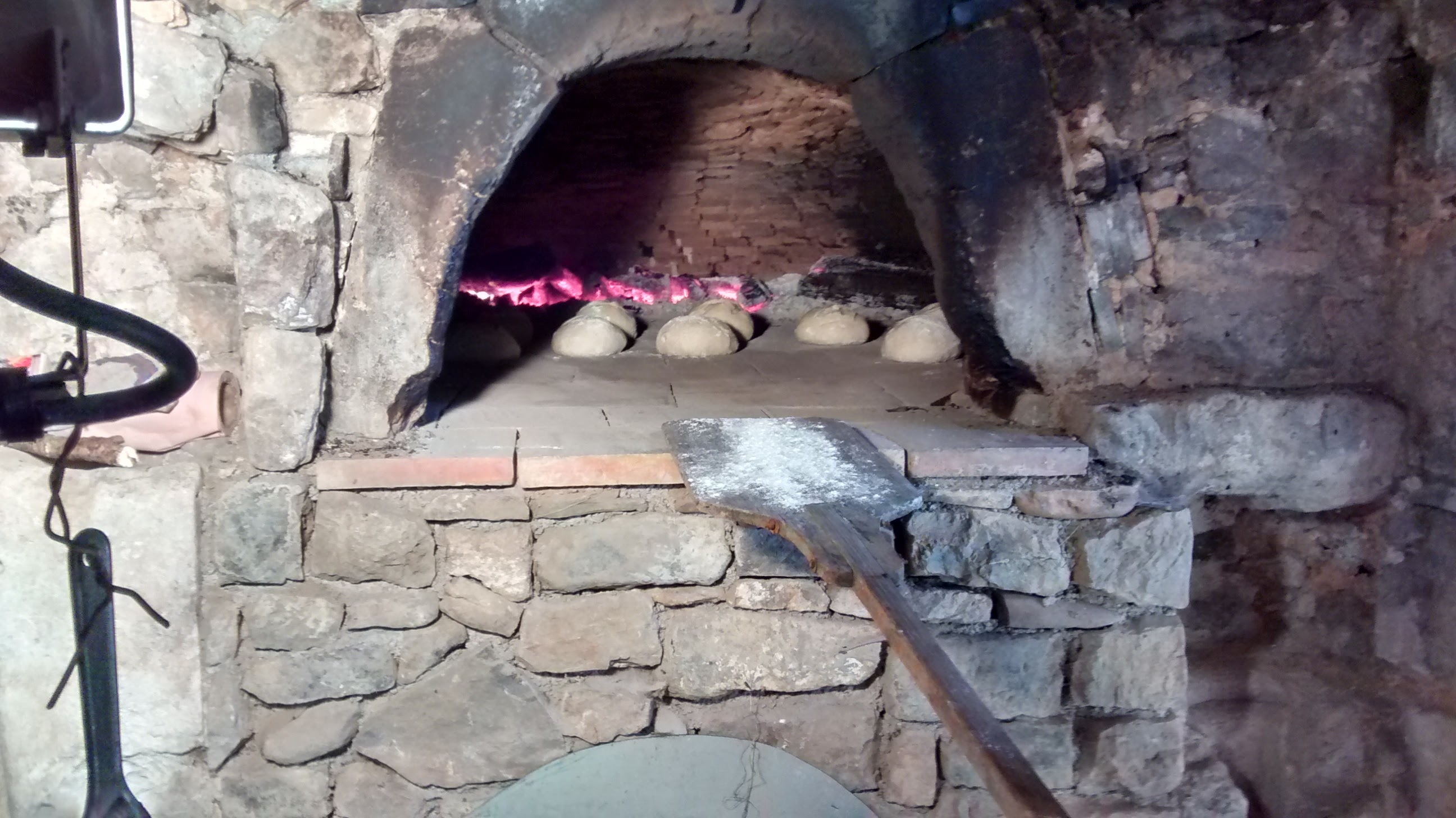

|
Since
then Mick has also restored a 300-year old bread
oven located in a large room at the back of the
mill, which he hopes to use to produce bread and
pizzas from the mill’s flour.
At the end of 2018 the mill won a heritage prize for
the renovation work so far from an organization
called Sites et Monuments, which covers the whole
of France
Mick says: “For any of your members on Facebook I
set up a group called Watermill Enthusiast; if they
can find it they are more than welcome to join. Or
if you want to contact me or pay a visit to the mill
my email is
mickwatson8@gmail.com
.”
|
|
Compiled from information and articles supplied by
Mick:
Graft and Grind
by
Gillian Harvey in
Living France
(April
2016),
Keen locals bring mill back to life
by
Samantha David in
Connexion France
(https://www.connexionfrance.com/Archive/Keen-locals-bring-mill-back-to-life),
Moulin de Gô
at Saint Pierre de Erve
by
Susan Keefe in
The Good Life France
(https://www.thegoodlifefrance.com/moulin-de-go-saint-pierre-de-erve/),
The
Moulin de Gô
website
www.moulindego.com,
where you can
find more information.
|
 |
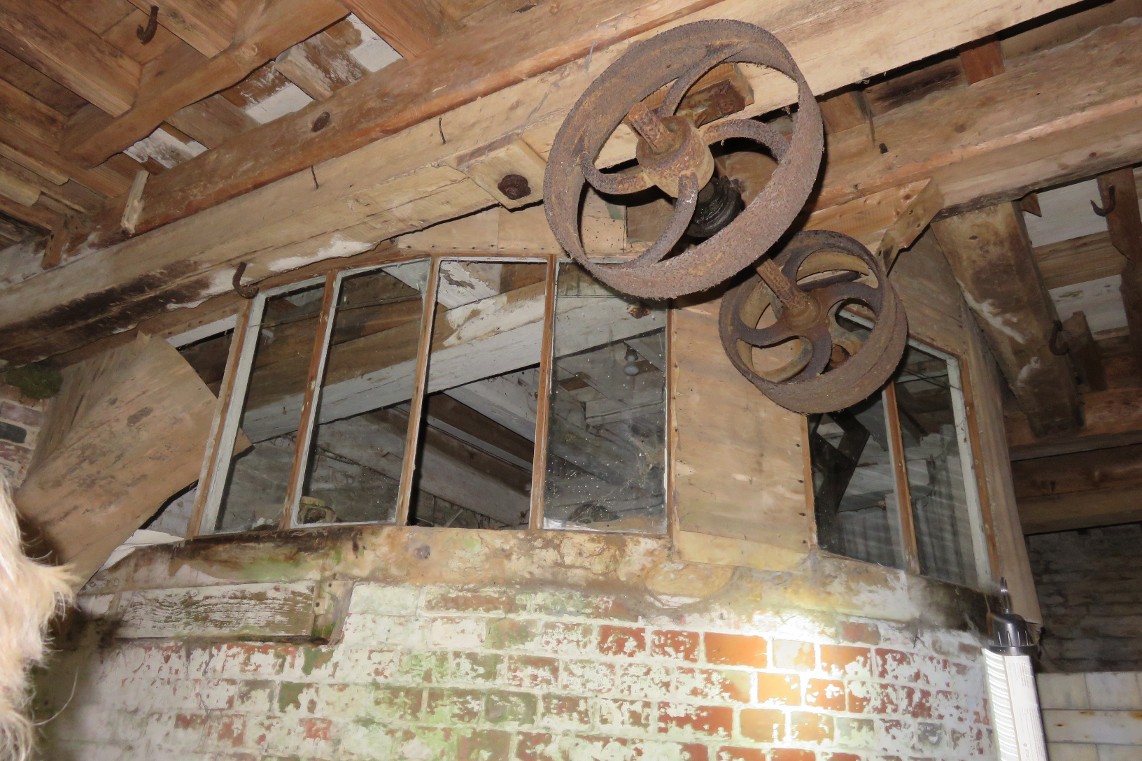 |
|
When I
first saw the picture in this article of the
poquerie (repeated,
above left) I immediately thought of Soberton
mill, which –as reported in Newsletter 120 – has a
very unusual curved wall round the space which the
pit wheel, wallower, and great spur wheel would have
occupied (above
right).
The gears are long gone, but the stone spindle
bearings are still in place on top of the wall to
give a clue to the function of the structure. The
prominent pulleys are part of the belt drive from
the more recent turbine.
|
